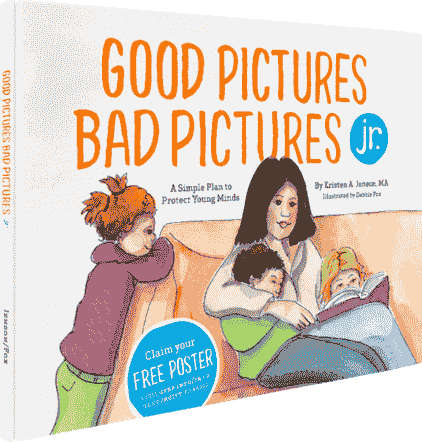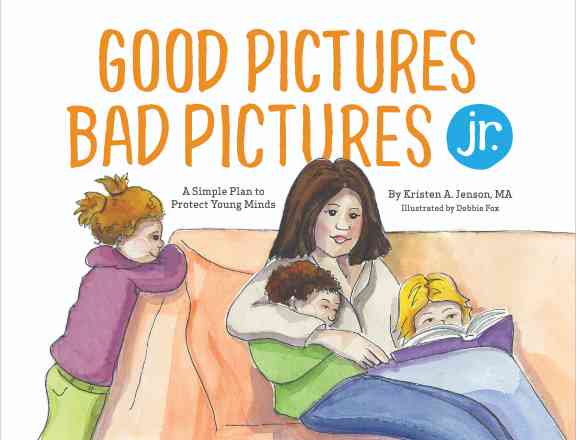.jpg)
.jpg)
Sexy Moves and Costumes in Children’s Dance–How to Protect Your Little Ones
There has been a palpable shift in children’s dance. The once healthy and educational environment has evolved into something harmful — hypersexualized children’s dance featuring adult costumes, choreography, and music. This change is quite the opposite of the positive experience I had with dance as a child.
.jpg)
Children benefit from healthy dance
I started ballet at 11 years old — a dream come true. Through movement, I felt a healthy change inside my heart that integrated my mind, body, and spirit. Overwhelming research supports my positive experience: children benefit from the art of dance through improved cognitive and academic development, confidence, creativity, and maturity.
Dance became an integral part of my identity, leading me to receive a BA in modern dance and a Master’s degree in worship with a dance emphasis. Yet along my journey, I couldn't help but notice a cultural shift gradually creeping into the dance world. A silent darkness began to distort dance, and I became particularly disturbed by how it impacted children, reaching younger and younger ages.
Healthy vs harmful dance
There is a huge difference between healthy and harmful dance. The differences need to be defined so that people can make informed choices. To distinguish between healthy and harmful dance, use these simplified definitions:
Healthy dance: Educational and joyful, featuring age-appropriate costumes, choreography, and music where children look and act like children.
Harmful dance: Hypersexualized, with children dressed like adults in adult costumes, choreography, and music, often accompanied by adult hairstyles and makeup.
What research reveals
While the positive research outcomes for healthy, holistic educational children’s dance are clear, The American Psychological Association (APA) research outcomes for harmful hypersexualized children’s dance indicate lifelong pathology ranging from:
- Depression
- Poor academic performance
- Body dysmorphia
- Eating disorders
- Early pregnancy
- Higher risk of abusive relationships
- Porn objectification
- Promotion of rape culture
Learn more about how porn normalizes the idea of “sexy kids,” in 5 Proven Ways Porn Harms Kids that No One Talks About
Online dangers
Physical and emotional injury from hypersexualized children’s dance also extends to online dangers. Harmful dance has led to online predators contacting dance students when they post dance videos from their classes on unfiltered social media platforms.
Consequences on child development
The hypersexualization of dance can negatively impact child development, leading to various consequences such as:
- Grooming for future relationship abuse. Why? Because children copy what they see. Brain research refers to this process as ‘mirror neurons.’ It is a key aspect of child development.
- Neurological stress. Children's brains are simply not mature enough to handle exposure to adult sexual material.
- Development of impulsive behavior and impaired critical thinking. This exposure to hypersexuality not only affects brain development but can lead to trauma outcomes from PTSD (post-traumatic stress syndrome) to ACE (adverse childhood experience).
Dehumanizing effects
Last but not least, the research shows that adults who watch hypersexualized children in dance perceive that child as someone undeserving of dignity, lacking an independent mind, and being unintelligent. This has made it easy to dehumanize and commodify them, leading to acts of violence. It’s a perfect storm.
Related: Body Image Talking Points from Dr. Lexie Kite Part 1 and Part 2
Corporate pedophilia
A lack of cultural awareness and financial greed from corporations plays a central role in this issue. Researcher Philip Adams has coined the term ‘corporate paedophilia’ to describe how we use children to make money for adults.
He stated, “Corporate pedophilia is a metaphor which describes the selling of products to children before they are able to understand advertising and thus before they are able to consent to the process of corporate-led consumption. The metaphor draws a parallel between actual pedophilia, the use of children for the sexual pleasure of adults, and corporate use of children for the financial benefit of adults who own and manage corporations.”
[[CTA]]
Founding of Dance Awareness: No Child Exploited
All of these harmful dance factors normalize what is not normal. It’s a complicated story founded on inappropriate exposure to adult sexual issues and a culture taken by surprise.
Several years ago, I started on my own journey of education and awareness. I encountered a stark reality. As a dance educator, I had once taught a little girl the joy of healthy dance. Years later I attended her college dance concert. Initially, I was thrilled to go; then I became disturbed. Instead of art, I saw hypersexualized dance, complete with unsettling catcalls from men during the 2-hour concert. I hoped this was an aberration.
Anticipating a change the following year, I was met with greater shock. The concert showcased even more disturbing hypersexualized dance that greatly contrasted my university dance education or any personal dance experience. I was deeply grieved to see women choosing self-objectification in adult costumes, choreography and music. But after all, these were adult college students over 18 years of age. That silenced my soul until........
I saw the same kinds of hypersexualized dances not only in high school and junior high dance concerts, but even in elementary school and preschool classes. It was a nightmare that came to life.
This is why I founded DA:NCE (Dance Awareness: No Child Exploited). As a dance educator and a caring adult who experienced the joy of healthy dance, I felt and still feel a need to educate others about this dangerous trend so that we might protect children and the art of dance.
A call to action
Children are not mini-adults. They still need time and space to develop physically, mentally and emotionally. Here are practical steps that you can take to stop the hypersexualization of children in adult costumes, choreography, and music. It happens one person at a time.
1. Become aware of the problems. We can’t address what we don’t have the courage to name. Understand the differences between healthy and harmful dance.
2. Make informed choices when selecting a dance studio for your child.
3. Educate other adults with free resources from DA:NCE including newsletters, ebooks, short videos, trailers, PowerPoints and research.
4. Share your voice. We invite you to contribute to ‘My DA:NCE Why’, by recording a short video or audio message explaining why you are passionate about protecting the art of childhood dance. We need to know “your why”!
5. Join the DA:NCE Coalition to help stop the hypersexualization of children in dance. We're planning a group of volunteers, including dance teachers, studio owners, artists, and caring adults. The Coalition launches in spring 2024, but for now, you can get more information by sharing your contact details here. There's no obligation to participate; we'll add your name to our interested list and contact you when we have more details to share.
Age-appropriate talking points
To help kids understand the difference between healthy and harmful dance, you could use the following age-appropriate talking points that serve as conversation starters about fundamental concepts.
- What do the words healthy and harmful mean?
- What is the meaning of dance?
- What is the difference between healthy versus harmful dance?
- What’s the difference between an adult and a child?
- Why are some media resources harmful for you?
- Why do you need to have your parents help you grow in healthy ways?
You are the protective factor
Join me in the journey to protect children and protect the art of dance. Go to www.danceawareness.com for free DA:NCE resources to overcome a dangerous trend. And take note: This trend affects all children, not just children taking dance lessons. Harmful dance impacts children, whether they dance or not, because of ongoing media/internet culture influenced by the porn industry. It's crucial to understand that the influence of this trend extends beyond dance studios, reaching children through various media platforms.
The solution to hypersexualized children’s dance is NOT solved by taking kids out of dance. Remember that healthy dance is a wonderful activity for children of all ages (and adults too). Actually the solution to harmful dance is healthy dance because research shows that healthy dance engages the mind, body, & spirit: the whole person. And that’s how we need to see every child: a full human who needs caring adults to navigate a complicated culture.
.jpg)


Good Pictures Bad Pictures Jr.
“I highly recommend this book to all people with children. A must have for all parents!” —Amazon Review
.jpg)
.jpg)






